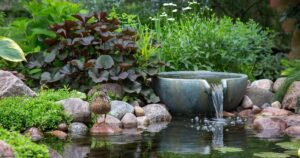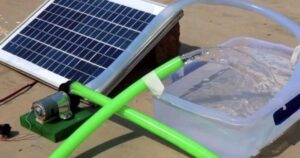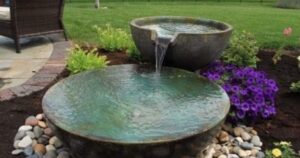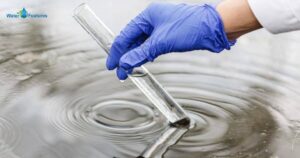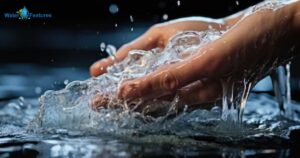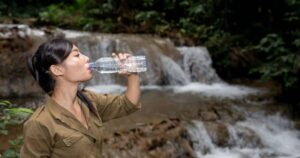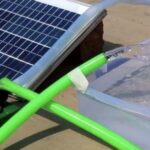Hose water refers to water sourced from a garden hose or similar outdoor plumbing fixtures. It’s commonly used for activities like gardening, washing cars, or even filling up swimming pools. Hose water may come from the same municipal supply as tap water, but there are critical distinctions. Hose water often flows through hoses made of various materials, and these hoses can introduce contaminants or affect the water’s taste and odor.
Water is essential for life, and the source of our water can have a significant impact on its quality and safety. Many of us rely on tap water for our daily needs, but what about hose water? Is hose water the same as tap water? In this article, we will explore the differences and similarities between these two sources of water. Understanding the nuances of hose water versus tap water is crucial for making informed choices regarding our water usage.
Hose water and tap water often originate from the same municipal water supply, which means they undergo similar treatment processes to ensure safety. The key distinctions lie in the materials the water comes into contact with. Hoses may contain chemicals like lead or phthalates that can leach into the water, affecting its safety and taste. To ensure the quality of hose water, it’s advisable to use hoses labeled as safe for drinking water and flush the hose before consuming the water.
Unclean Water Can Cause Health Effects
Water quality is paramount to our well-being, and understanding the potential risks associated with hose water is crucial. Here, we will explore the health effects that can arise when hose water is not up to par with tap water. Unclean water can pose significant health risks, underscoring the vital importance of water quality. When water is contaminated or impure, it can lead to a range of health effects, from mild gastrointestinal issues to more severe illnesses.
It is crucial to ensure that the water we consume and use in our daily lives is clean and free from potential hazards, whether it comes from a tap or a garden hose. Free water, different from tap water, can be found in various settings, such as natural springs, wells, or rainwater harvesting systems. While these sources might offer water free from certain chemical treatments, they still require careful assessment to ensure their safety before drinking or using for household purposes.
Hoses Can Cause Garden Pollution
Hose Materials Matter: Hoses come in various materials, and not all of them are safe for drinking water. Some hoses may contain lead, phthalates, or other harmful chemicals that can leach into the water, posing health risks when ingested.
Contaminants from Garden Chemicals: Hose water can be exposed to garden chemicals, such as pesticides and fertilizers. When you use hose water to irrigate your garden, these chemicals can wash into the hose and potentially contaminate the water.
Hot Hose Water Concerns: Leaving water in the hose under the sun can cause it to heat up. Hot water can increase the leaching of harmful materials from the hose itself, making it less safe for consumption.
Bacterial Growth: Stagnant water in a hose can also become a breeding ground for bacteria, particularly during warm weather.
| Aspect | Hose Water | Tap Water |
| Source | May come from the same municipal supply | Typically sourced directly from municipal treatment plants |
| Material Exposure | Flows through hoses made of various materials | Flows through dedicated drinking-water safe pipes |
| Contaminants | Can leach lead, phthalates, or other chemicals | Subject to rigorous treatment processes to meet safety standards |
| Odor and Taste | May have an unusual taste or odor | Generally odorless and taste-neutral |
| Exposure to Sunlight | Can become heated in the hose under sunlight | Delivered through regulated pipes designed for drinking water |
How to Reduce the Risk of Unclean Water from the Garden Hose
To ensure the water you use from your garden hose is safe and free from contaminants, you can take several preventive measures.
Hose Selection:
Use Drinking-Water Safe Hoses: Opt for hoses specifically labeled as drinking-water safe. These hoses are designed to minimize leaching of harmful materials into the water.
Regular Flushing: Before using the hose for any drinking or cooking purposes, flush it with cold water for a few minutes to remove any stagnant water and potential contaminants.
Store Properly: Store your hose out of direct sunlight and away from potential sources of contamination, such as chemicals and fertilizers, to prevent leaching.
Regular Cleaning: Clean your hose periodically to prevent bacterial growth. You can use a mild bleach solution for this purpose.
Is Hose Water the Same as Tap Water?
Hose water and tap water, despite their shared source from municipal supplies, exhibit notable distinctions that influence their quality and safety. Hose water may pass through hoses made of various materials, potentially introducing contaminants like lead or chemicals.
In contrast, tap water undergoes rigorous treatment processes and flows through dedicated, regulated pipes, making it generally safer and more suitable for drinking and cooking. Understanding these differences empowers us to make informed choices when using water for various purposes, ensuring it aligns with our needs and health concerns.
WHERE DOES THE WATER COME FROM?
Tap Water Source: Tap water typically originates from a municipal supply system, where it undergoes thorough treatment to meet safety standards. It flows through dedicated, regulated pipes designed for drinking water.
Hose Water Source: Hose water, on the other hand, may also come from the same municipal supply, but it can be exposed to materials and conditions that can alter its quality. Hoses are made from various materials, and exposure to sunlight and contaminants can affect the water’s taste, odor, and safety.
What Happens If You Drink Hose Water
Drinking hose water can carry certain risks.
Taste and Odor: Hose water may have an unusual taste or odor due to leaching from hose materials or exposure to contaminants.
Chemical Contaminants: Depending on the hose’s material, it may contain chemicals like lead or phthalates, which can pose health risks when ingested.
Bacterial Contamination: Stagnant water in a hose can promote bacterial growth, potentially leading to waterborne illnesses.
Drinking from a Garden Hose

Precautions: If you plan to drink from a garden hose, ensure it’s made of drinking-water-safe materials and has been thoroughly flushed to remove stagnant water. Consider using a filter to further purify the water.
Is Hose Water Tap Water? Drinking water straight from a garden hose is a common childhood memory for many, but is it safe? While garden hoses are designed for outdoor tasks like watering plants and washing cars, using them as a source of drinking water can carry potential risks. Hoses can contain materials like lead and other harmful chemicals that may leach into the water, and stagnant water within the hose can foster bacterial growth.
FAQ’S
Can you drink from a regular garden hose?
Drinking from a regular garden hose is not recommended. It may contain lead or other harmful chemicals and can also harbor bacteria due to stagnant water.
How can I make hose water safer to drink?
To make hose water safer, use hoses labeled as drinking water safe, flush the hose before use, and consider using a water filter.
Can hose water be used for other purposes besides drinking?
Yes, hose water is suitable for various outdoor purposes such as gardening, car washing, and pool filling. Just be cautious when it comes to drinking or cooking with it.
Conclusion
While hose water and tap water may originate from the same source, they are not identical. The materials and conditions to which hose water is exposed can introduce risks that are not typically associated with tap water. Understanding these differences empowers us to make informed decisions about the water we use for various purposes, be it for drinking, cooking, or other outdoor activities. Taking precautions and using the right type of hose can help ensure that hose water is as safe as possible for its intended use.
The distinctions lie in the materials, conditions, and potential contaminants that hose water can encounter, which can impact its safety and quality. To make the most of hose water, it is crucial to take precautionary measures, such as using drinking-water-safe hoses, regular flushing, and proper storage. By being aware of these differences and actively managing the risks, we can ensure that the water we use, whether from the tap or the hose, remains safe for its intended purpose, be it quenching our thirst or nurturing our gardens.

